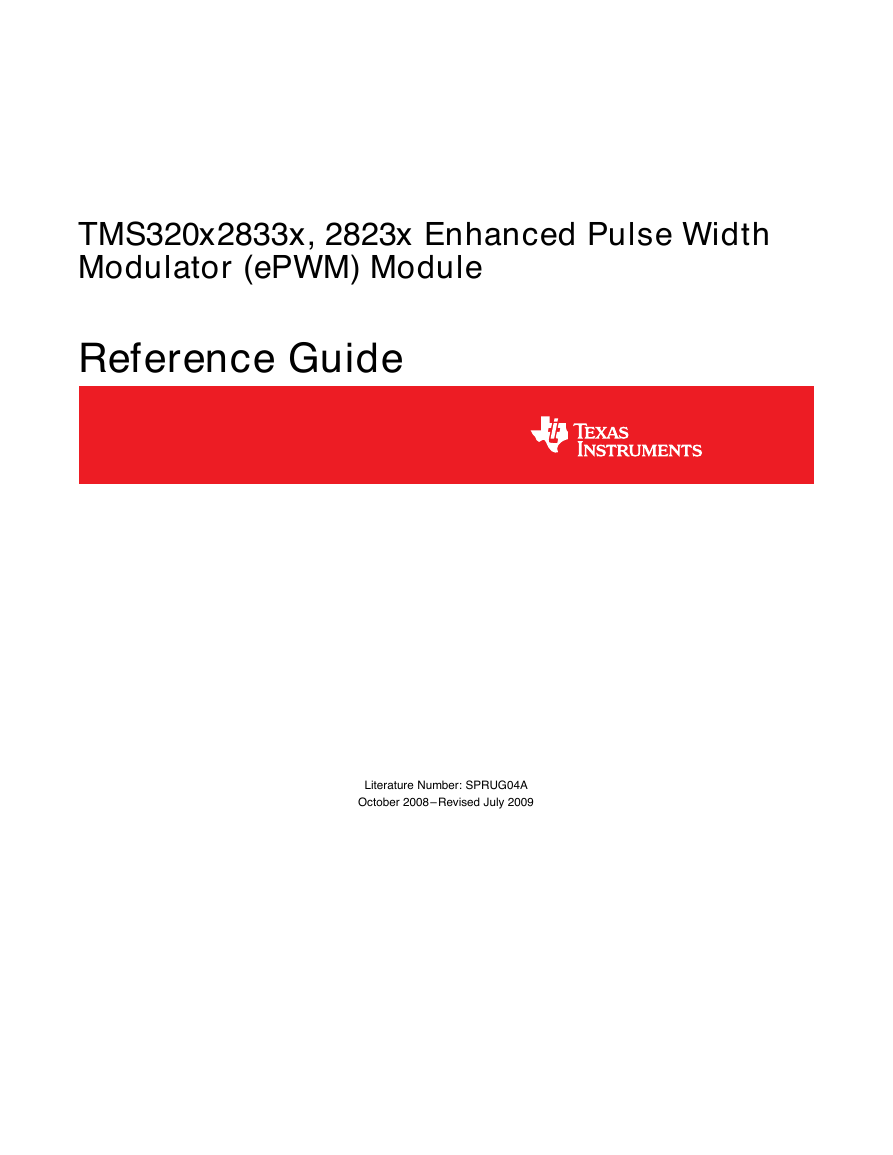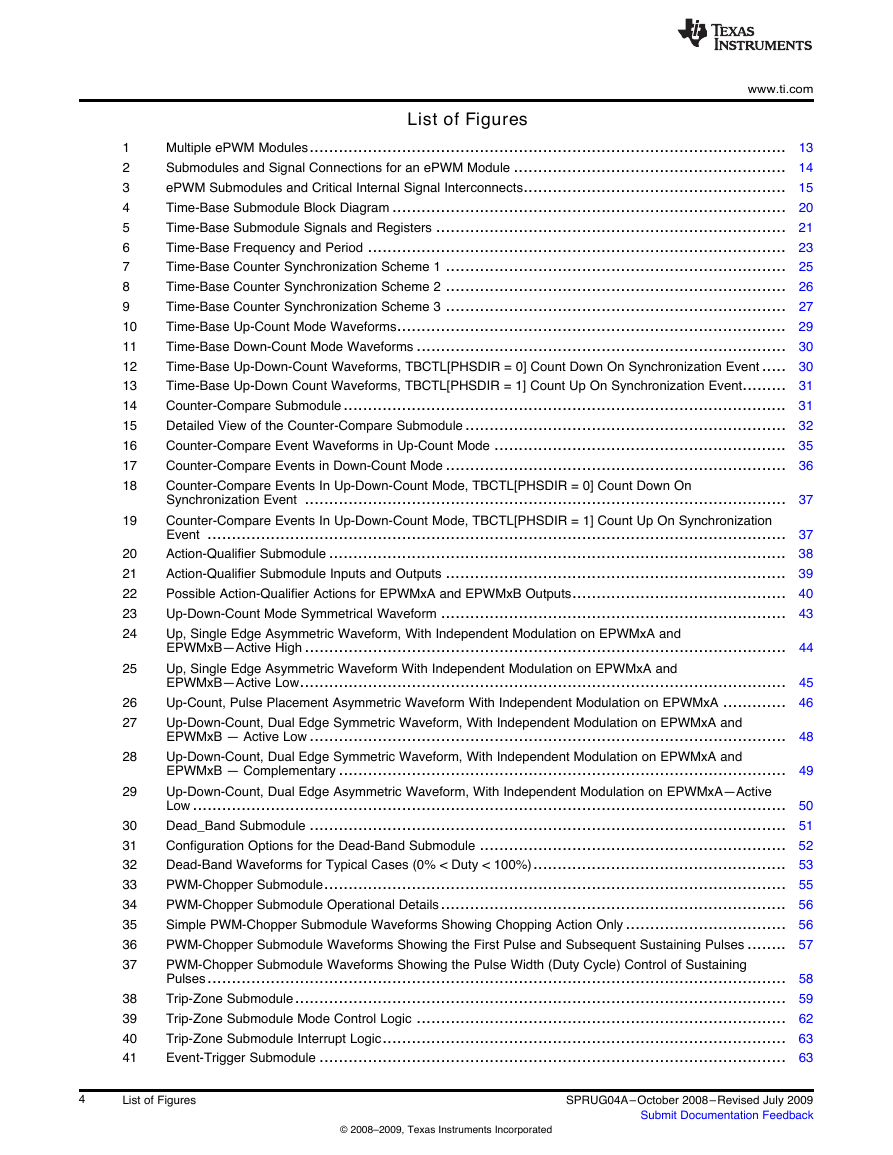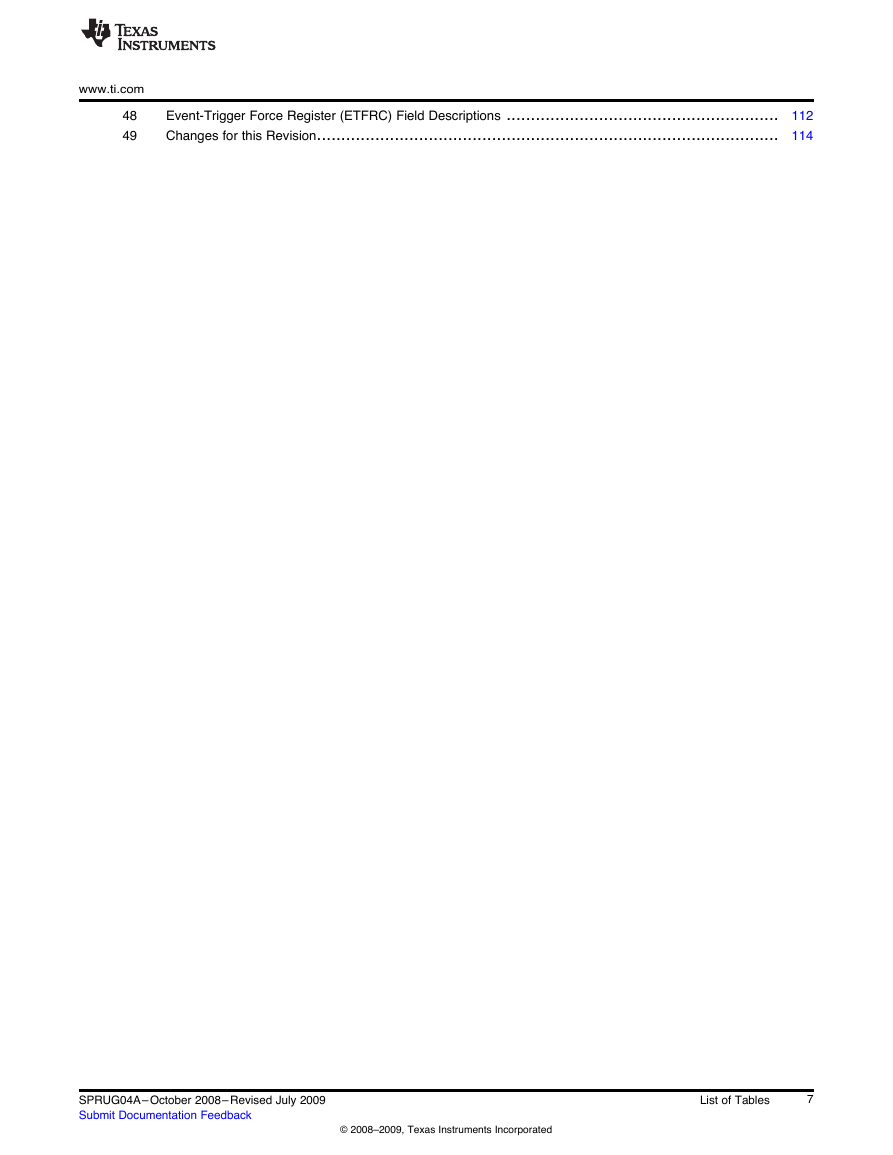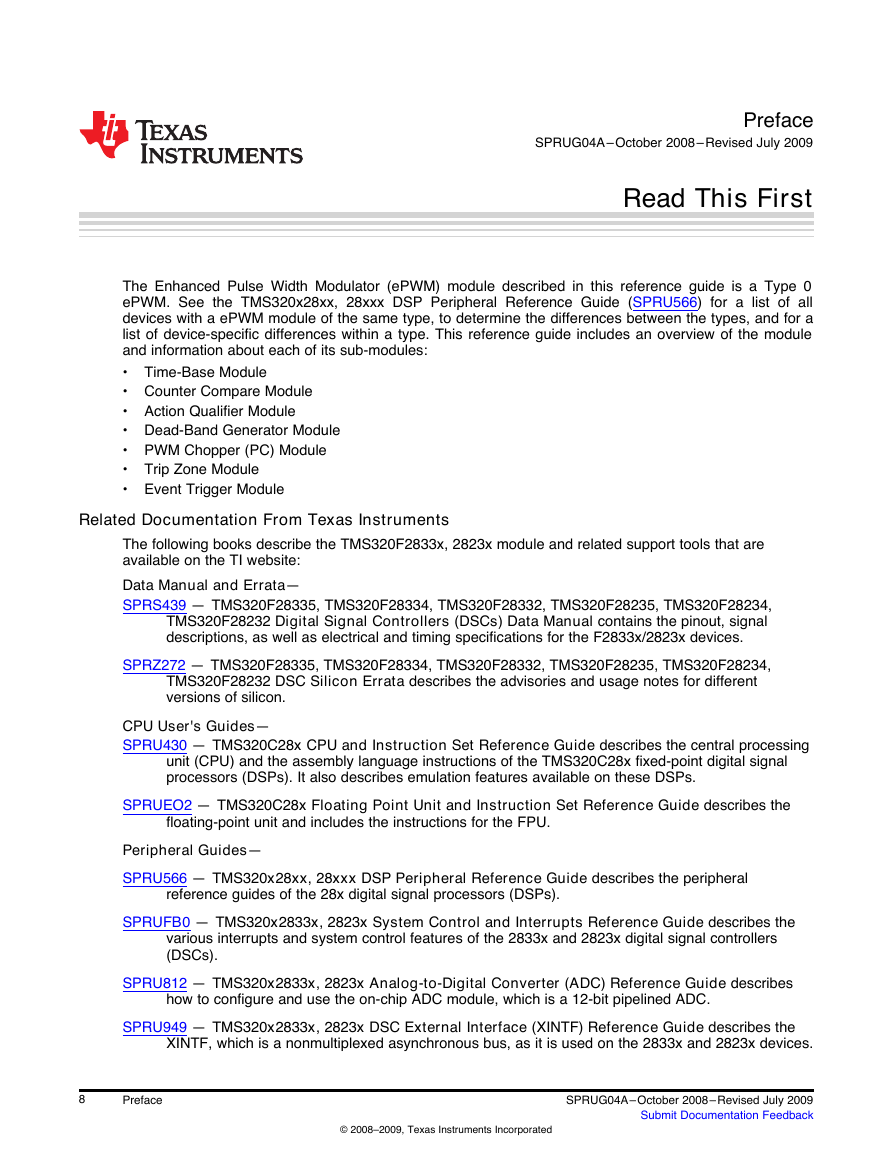TMS320x2833x, 2823x Enhanced Pulse Width Modulator (ePWM) Module
Table of Contents
Preface
1 Introduction
1.1 Submodule Overview
1.2 Register Mapping
2 ePWM Submodules
2.1 Overview
2.2 Time-Base (TB) Submodule
2.2.1 Purpose of the Time-Base Submodule
2.2.2 Controlling and Monitoring the Time-base Submodule
2.2.3 Calculating PWM Period and Frequency
2.2.3.1 Time-Base Period Shadow Register
2.2.3.2 Time-Base Clock Synchronization
2.2.3.3 Time-Base Counter Synchronization
2.2.4 Phase Locking the Time-Base Clocks of Multiple ePWM Modules
2.2.5 Time-base Counter Modes and Timing Waveforms
2.3 Counter-Compare (CC) Submodule
2.3.1 Purpose of the Counter-Compare Submodule
2.3.2 Controlling and Monitoring the Counter-Compare Submodule
2.3.3 Operational Highlights for the Counter-Compare Submodule
2.3.4 Count Mode Timing Waveforms
2.4 Action-Qualifier (AQ) Submodule
2.4.1 Purpose of the Action-Qualifier Submodule
2.4.2 Action-Qualifier Submodule Control and Status Register Definitions
2.4.3 Action-Qualifier Event Priority
2.4.4 Waveforms for Common Configurations
2.5 Dead-Band Generator (DB) Submodule
2.5.1 Purpose of the Dead-Band Submodule
2.5.2 Controlling and Monitoring the Dead-Band Submodule
2.5.3 Operational Highlights for the Dead-Band Submodule
2.6 PWM-Chopper (PC) Submodule
2.6.1 Purpose of the PWM-Chopper Submodule
2.6.2 Controlling the PWM-Chopper Submodule
2.6.3 Operational Highlights for the PWM-Chopper Submodule
2.6.4 Waveforms
2.6.4.1 One-Shot Pulse
2.6.4.2 Duty Cycle Control
2.7 Trip-Zone (TZ) Submodule
2.7.1 Purpose of the Trip-Zone Submodule
2.7.2 Controlling and Monitoring the Trip-Zone Submodule
2.7.3 Operational Highlights for the Trip-Zone Submodule
2.7.4 Generating Trip Event Interrupts
2.8 Event-Trigger (ET) Submodule
2.8.1 Operational Overview of the Event-Trigger Submodule
3 Applications to Power Topologies
3.1 Overview of Multiple Modules
3.2 Key Configuration Capabilities
3.3 Controlling Multiple Buck Converters With Independent Frequencies
3.4 Controlling Multiple Buck Converters With Same Frequencies
3.5 Controlling Multiple Half H-Bridge (HHB) Converters
3.6 Controlling Dual 3-Phase Inverters for Motors (ACI and PMSM)
3.7 Practical Applications Using Phase Control Between PWM Modules
3.8 Controlling a 3-Phase Interleaved DC/DC Converter
3.9 Controlling Zero Voltage Switched Full Bridge (ZVSFB) Converter
4 Registers
4.1 Time-Base Submodule Registers
4.2 Counter-Compare Submodule Registers
4.3 Action-Qualifier Submodule Registers
4.4 Dead-Band Submodule Registers
4.5 PWM-Chopper Submodule Control Register
4.6 Trip-Zone Submodule Control and Status Registers
4.7 Event-Trigger Submodule Registers
4.8 Proper Interrupt Initialization Procedure
Appendix A Revision History
















 2023年江西萍乡中考道德与法治真题及答案.doc
2023年江西萍乡中考道德与法治真题及答案.doc 2012年重庆南川中考生物真题及答案.doc
2012年重庆南川中考生物真题及答案.doc 2013年江西师范大学地理学综合及文艺理论基础考研真题.doc
2013年江西师范大学地理学综合及文艺理论基础考研真题.doc 2020年四川甘孜小升初语文真题及答案I卷.doc
2020年四川甘孜小升初语文真题及答案I卷.doc 2020年注册岩土工程师专业基础考试真题及答案.doc
2020年注册岩土工程师专业基础考试真题及答案.doc 2023-2024学年福建省厦门市九年级上学期数学月考试题及答案.doc
2023-2024学年福建省厦门市九年级上学期数学月考试题及答案.doc 2021-2022学年辽宁省沈阳市大东区九年级上学期语文期末试题及答案.doc
2021-2022学年辽宁省沈阳市大东区九年级上学期语文期末试题及答案.doc 2022-2023学年北京东城区初三第一学期物理期末试卷及答案.doc
2022-2023学年北京东城区初三第一学期物理期末试卷及答案.doc 2018上半年江西教师资格初中地理学科知识与教学能力真题及答案.doc
2018上半年江西教师资格初中地理学科知识与教学能力真题及答案.doc 2012年河北国家公务员申论考试真题及答案-省级.doc
2012年河北国家公务员申论考试真题及答案-省级.doc 2020-2021学年江苏省扬州市江都区邵樊片九年级上学期数学第一次质量检测试题及答案.doc
2020-2021学年江苏省扬州市江都区邵樊片九年级上学期数学第一次质量检测试题及答案.doc 2022下半年黑龙江教师资格证中学综合素质真题及答案.doc
2022下半年黑龙江教师资格证中学综合素质真题及答案.doc